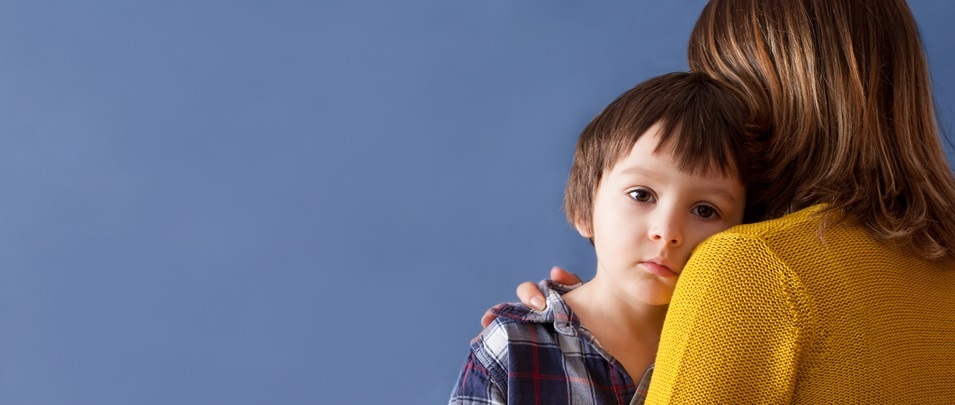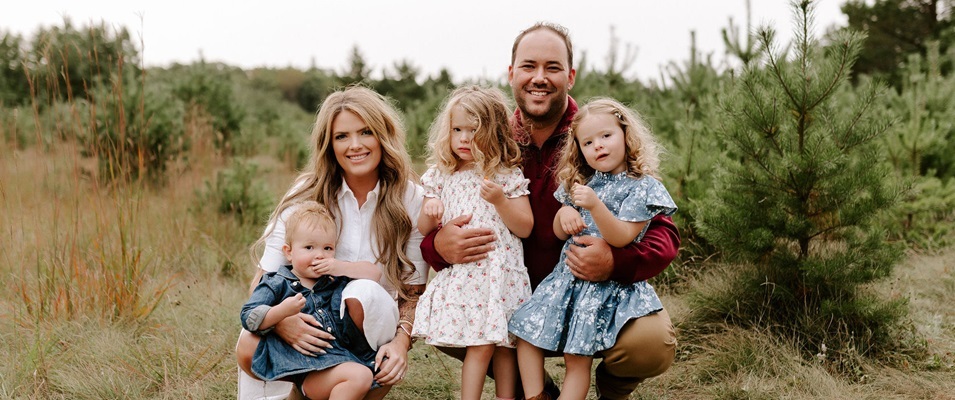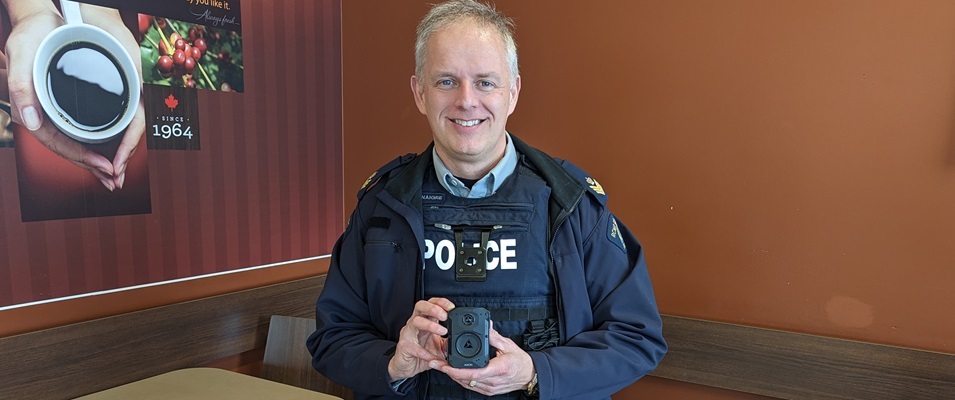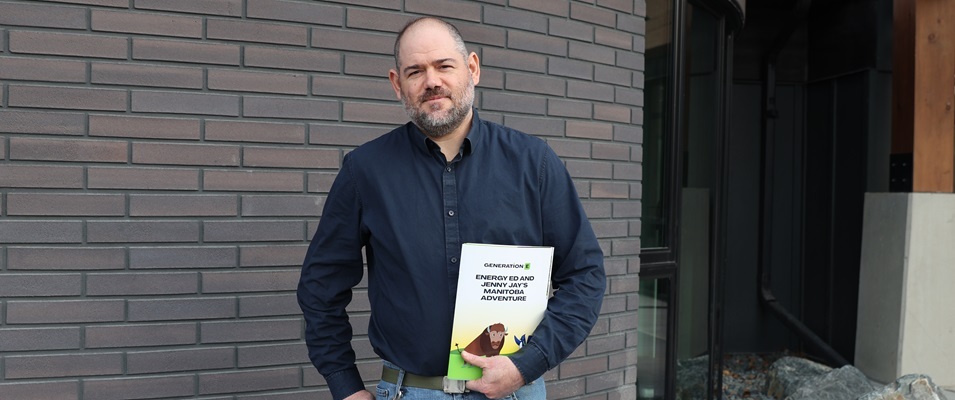
In this article, The Citizen interviews Dr. Jo Ann Unger, a registered clinical psychologist who manages a private practice in Winnipeg. She works professionally with people across the lifespan, from children to families, adults, and couples. Unger also serves as the specialty lead for the child and adolescent division of Clinical Health Psychology through Shared Health. In years past, she’s been the acting manager of the family therapy program at New Directions and the clinical director for Kidthink.
For many families, childhood anxiety is an all too familiar experience, whether it presents as a short-term or long-term concern. This month, it will be two full years since pandemic restrictions were fully lifted in Manitoba, yet much of the mental health fallout remains, especially among children.
According to the Canadian Institute for Health Information (CIHI), in 2020, nearly one in four hospitalizations for children and youth could be attributed to mental health conditions. That same year, the Kids Help Phone lit up with more than double the calls than were received the previous year.
A mental health survey released by Statistics Canada in December 2023 uncovered some interesting findings in terms of adult mental health following the COVID-19 years. The proportion of adults reporting a good mental health status and overall life satisfaction had climbed since 2021.
Despite this, one in four adults still reported symptoms of moderate to severe depression, anxiety, or PTSD, a ratio that’s remained constant since 2021.
According to Dr. Jo Ann Unger, things may be looking more optimistic among children since the pandemic. She admits, though, that diagnosing anxiety in children can be more challenging since they don’t typically have the same capacity to use words or describe their emotional state.
“There is still some evidence that we are higher than prepandemic, but not as high as during pandemic in terms of our rates of childhood mental health and anxiety,” Unger says.
Based on a presentation Unger gave at a paediatric healthcare conference in 2022, things weren’t all that rosy before the pandemic either. One in seven Manitoban children were diagnosed with a mental health disorder in 2016. At the time, this was double the national average.
As a whole, Canada isn’t faring too well on the international level. Statistics provided by UNICEF (United Nations Children’s Fund) in 2020 had Canada ranked 31 out of 38 countries for mental well-being.
“In general, anxiety seems to be trending upward in our North American culture,” Unger says.
Is Anxiety Always Bad?
According to Anxiety Canada, anxiety is one of the most common mental health concerns among children, affecting at least 20 percent in some way. Even so, the Canadian Mental Health Association says that anxiety isn’t necessarily a disorder. In fact, it’s a normal response to potential threats. It’s the alarm bell that helps us recognize danger so we can respond in self-protective ways.
In many cases, anxiety can be a helpful instinct that motivates us to take action or work hard to achieve a goal.
Unger says that, to some degree, we’ve come to a place in the twenty-first century where feelings that are normal to the human condition—such as sadness, grief, and anxiety—are being viewed as disorders. In reality, they are basic emotions to be worked through given the right tools and support.
“When I was a kid growing up, every [book and movie] had a happy ending,” Unger says. “And if you weren’t happy and you didn’t get that ending, there was something wrong with you, as opposed to [just realizing that] the world is sometimes tough and not fair.”
Unless a child’s anxiety becomes debilitating, going off like a false alarm and interfering with normal functioning in daily life, Unger says that most parents can help their child work through these difficult stages and get them safely to the other side.
What Can Parents Do?
According to Unger, expressions of childhood anxiety are usually caused by a combination of genetics and environmental factors.
From one child to the next, the tolerance level for stress can be worlds apart. Within the same family, parents might recognize one child’s ability to cope with life’s stressors effortlessly while the next child might feel paralyzed in the face of them.
Neither of these responses is abnormal. The second child will simply require more guidance, patience, and management tools in order to achieve good mental health outcomes.
First and foremost, Unger says, is to try to identify the specific stressor in the child’s life to determine how to best manage it.
Next, it’s important that a parent never minimize their child’s fear by telling them they’re being unreasonable or irrational. Regardless of how miniscule the challenge may seem to someone else, the child’s fear is as real and formidable as that of any real-life threat to a grown adult.
Instead approach the situation from a place of compassion and loving guidance.
Be calm and teach your child how to take calming breaths. Provide a safe space where your child can talk openly about their fears.
Assist the child in recognizing and naming their feelings.
Finally, guide them in finding solutions that might help them overcome and, together, make an action plan to get there.
Can the Parent Be the Problem?
Even before the COVID-19 pandemic, Unger says that the world had begun a cultural shift that caused many adults to parent their children with a greater level of vigilance and oversight. More pervasive exposure to media may have a lot to do with that.
“A couple of generations ago, letting our kids out till it’s time to come back for supper was pretty common,” says Unger. “Kids were engaged in all sorts of things that parents had no idea about. But now we have a sense that there’s lots of dangers out there in the world and that it’s our job to keep our kids safe.”
Society sometimes calls these extra-vigilant caregivers “helicopter parents.” According to Unger, though, this phrase is riddled with negative overtones. She prefers to think of these parents as “very involved,” because in the end they do what they do out of love.
Child psychologists like Unger see that when a parent overcompensates in their role as protector, it can interfere with the child’s natural development and stifle their opportunities to learn on their own, hampering the child’s independence and resiliency.
“Our colleagues are noticing that a sense of resilience is built by actually facing stressors and coming out on the other side,” she says. “When we have those experiences where things are hard and there isn’t a parent right there to pick us up, yet we overcome them successfully, we build this sense of confidence in ourselves that we can handle things. And it teaches us that we can face bigger things.”
Unfortunately, many parents are inclined to jump in and take immediate control when they see their child experience anxiety and stress.
“Some of the things that I work with parents on is learning how to regulate their own emotion,” Unger says. “When you see your child experiencing a difficult emotion, you experience it and you want it to stop. How you make it stop is you go and fix the thing for your kid.”
In most cases, she says, that’s the wrong approach. Her goal when advising parents is to help them see the difficulties their child faces through a more positive lens, by viewing them as growth opportunities rather than struggles.
“You can be kind and not fix it,” Unger says. “You can be warm and yet set a limit. It can be loving to not give a child what they want, even though they may be very upset [about it].”
Even the language a parent uses can create unnecessary fear and anxiety in a child. For example, offering constant reminders to “be careful” or “watch out” aren’t terribly helpful. In the end, Unger says, the only person who is reassured by them is the parent.
Take for example the child who’s experimenting with climbing and heights. Rather than uttering warnings that point out potential hazards, she says that parents should stand close and praise and encourage them as each foot makes contact with the safety of the next step.
“By not taking risks, you won’t have any of the bad outcomes,” Unger says. “But there may have been something [discovered] through taking the risk that you might have loved and which could have led to great success or wonderful opportunities that you would not have had had you not taken the leap.”
According to Unger, at least one full generation of children has now been raised by hypervigilant parents who have sought to save their child from all harm. For the past ten years or so, these children have been moving into the world. Some of them are entering university with a whole new set of stressors to face. The anxiety rates among these youth, she says, are exploding.
“They go to university and they haven’t had lots of experience with small stressors and how to [navigate them],” Unger says. “So the universities now offer orientations for parents along with their children. The reason they exist is that parents were calling for them. They’re thinking, ‘I have to help my child navigate his first year of university and how am I going to do that if I don’t know what he’s doing?’”
Mental Health and the Overscheduled Child
There are many reasons that parents may choose to keep their child actively involved in sports and social programs around the clock. Some parents look to develop high-achieving children while others simply want to prevent their kids from getting bored.
Using these activities as a boredom diversion tactic can be a problem. Boredom, through various stages of life, is inevitable. Not knowing how to cope with boredom can lead to anxiety instead of creativity.
“Wouldn’t it be great if we could just learn to let our minds wander and look at the clouds or do something really relaxing and boring which is good for us?” says Unger. “But we’re not used to it anymore. So it feels uncomfortable and we become upset.”
The Canadian Mental Health Association has a “wellness wheel” that emphasis physical activity, social stimulation, and feeling challenged. But it’s equally important to engage in self-care, downtime, and getting out in nature. All have their place in a person’s life.
Finding the balance, Unger says, is key. And parents need to ensure that every member of the family is finding that balance, including themselves.
“As a parent, sometimes we don’t prioritize our own mental health,” Unger says. “It is okay to say, ‘I can’t do this driving five days a week. It’s not in me and it doesn’t make me a bad parent.’ It’s important to look at the whole family and decide what’s the balance that the family needs to be well.”
Some signs that a child may not be finding balance include irritability, moodiness, overreacting to stimuli, withdrawal, changes in sleep and eating habits, and bouts of crying for no apparent reason.
“It’s really good to have regular check-ins with your kids,” Unger says. “Just to get them to talk about their lives and how they’re feeling and to really hear what they’re saying.”
Nutrition and Mental Health
We’re all very familiar with how the foods we consume affect our physical health, but scientists in recent years have invested a lot of energy into researching the gut-brain connection and how our diets affect it.
According to Harvard Health Publishing, about 95 percent of the body’s serotonin receptors are found in the lining of the gut. Serotonin is commonly known as the body’s “feel good” chemical. Good serotonin levels help you feel focused, emotionally stable, happy, and calm.
Low levels of serotonin can cause feelings of anxiety and depression. Many antidepressants and anxiety medications seek to increase the body’s serotonin.
Serotonin also helps regulate digestive functions, which is why poor gut health and poor mental health often occur simultaneously.
Serotonin is made from the essential amino acid tryptophan, which isn’t made by our bodies. Serotonin must be obtained from the foods we eat. Thus, diet plays an essential role in managing our mental well-being.
Unfortunately, many of the foods that contribute to the bulk of a child’s diet these days are nutrient-deficient, according to the Harvard article. Soda, sugared cereal, and candy are obvious contributors to poor health, but we often fail to recognize that most processed foods also contain high levels of sugar, under a variety of names. This includes savoury foods, such as store-bought pasta sauces. Simple carbohydrates, such as sugar, cause blood sugars to spike. Other common foods containing simple carbohydrates include fruit juices and anything made with white flour.
Getting your family back on a whole food diet rich in fresh vegetables, fruits, whole grains, beans, and nuts can go a long way. Experts also recommend focusing on foods that are rich in zinc, magnesium, iron, Vitamin B, Vitamin D, omega-3 fatty acids, and probiotics. These nutrients are believed to enhance brain development and cognitive function.
Finally, it is always wise to complement our diet with plenty of water and healthy regular doses of fresh air, sunshine, and exercise.1
When Childhood Anxiety Requires Professional Help
Unger says there are some key things to watch for in order to recognize when outside help may be needed.
“If behaviours are interfering with a child’s ability to do things that kids are normally able to do, and that continues for a period of time, that’s when treatment is needed. When it’s beyond what parents can manage on their own.”
The refusal to go to school is one common occurrence with children suffering from debilitating anxiety. Here, especially, professional help should be sought as soon as possible. Once the child digs their heels in, Unger says, it’s very difficult to get them to go back to school.
Cognitive behaviour therapy is a common tool among psychotherapists. There’s also exposure therapy, which is just as it sounds. It involves teaching a child to begin taking small, safe steps towards the things they’re afraid of until the fear is finally overcome.
Anxiety Canada has a great online resource to help arm parents with the right tools to help kids and recognize when it’s time to seek professional help. The most common types of childhood anxiety include social anxiety, separation anxiety, generalized anxiety disorder, and obsessive compulsive disorder.




















